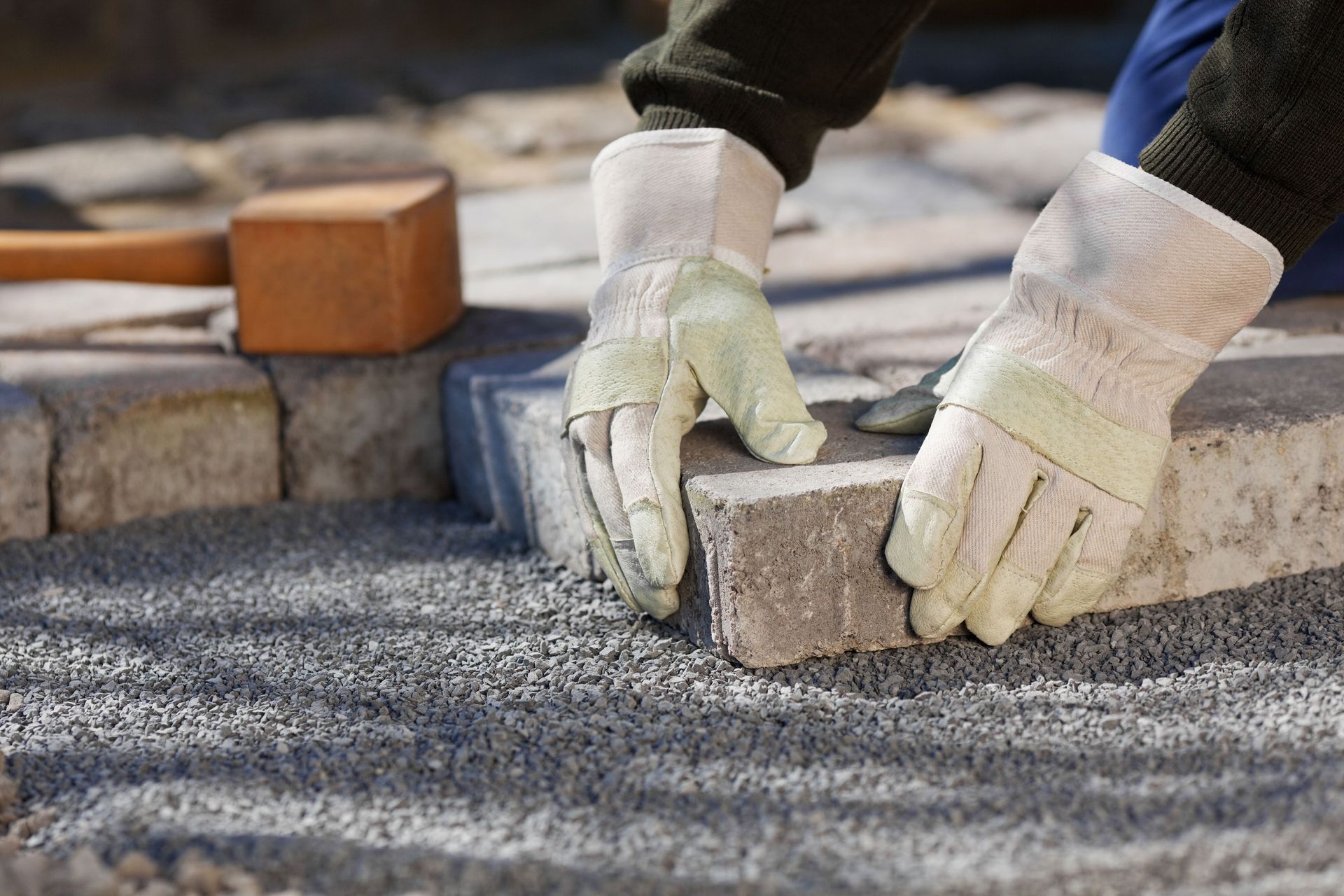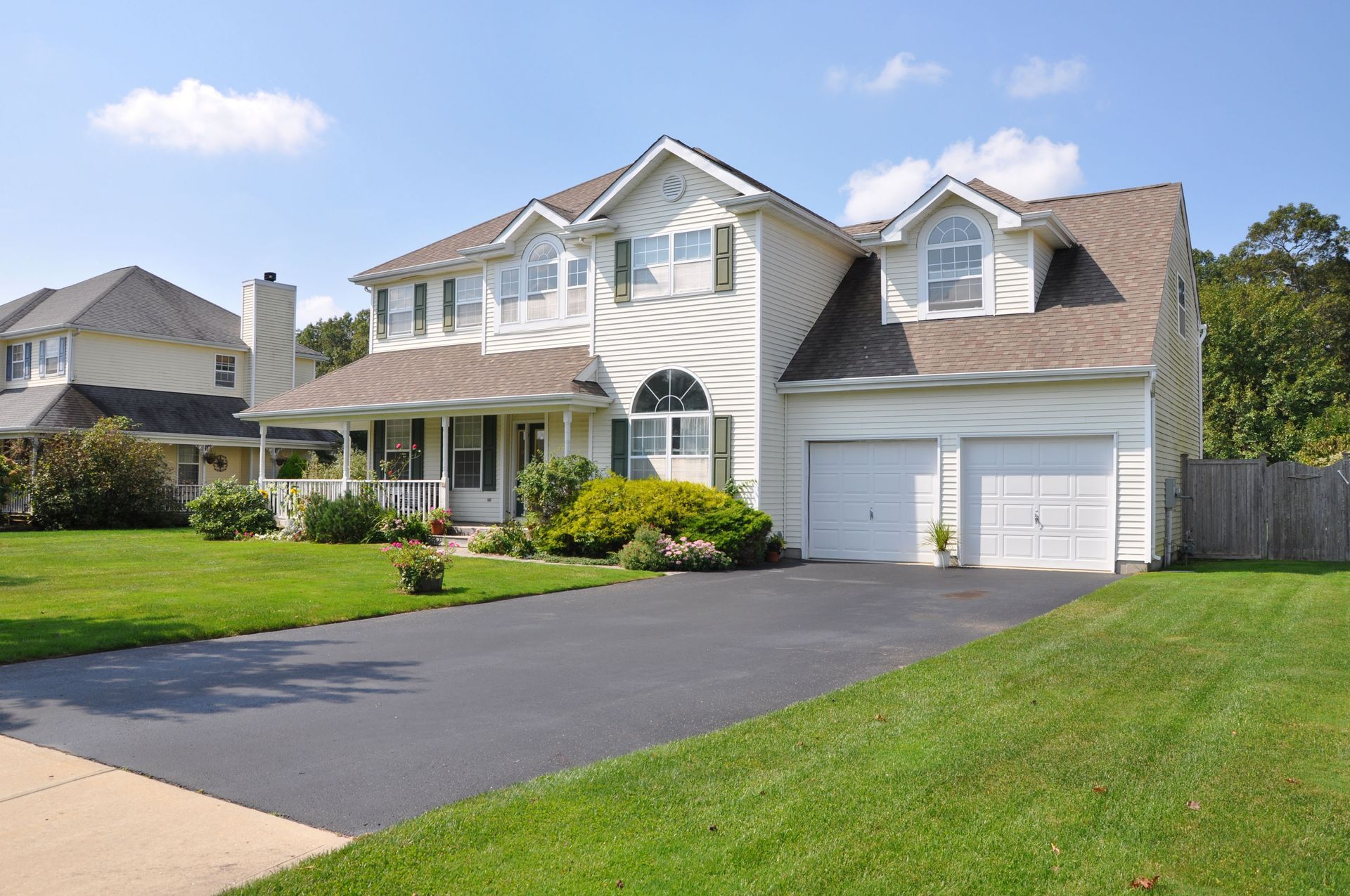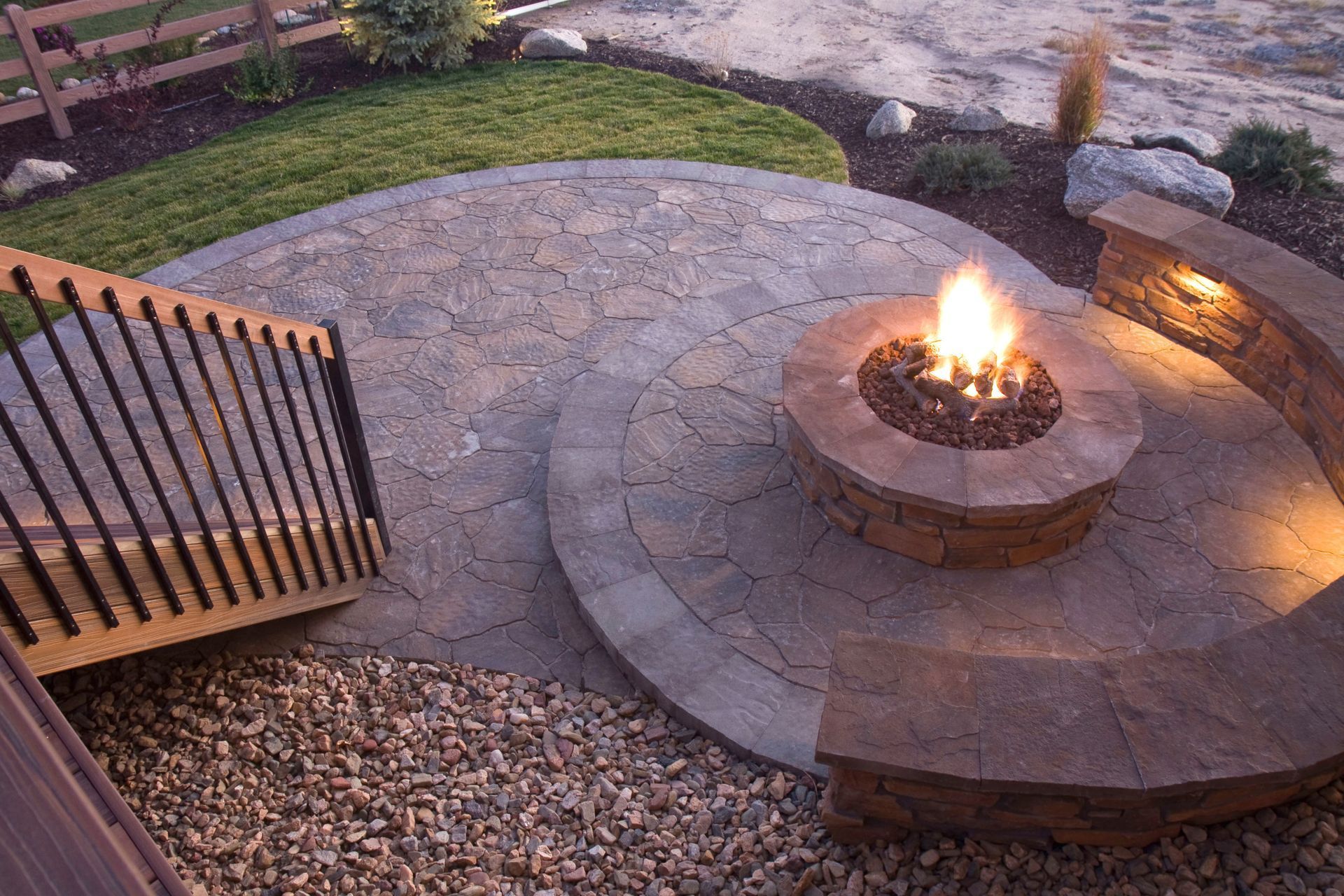October 16, 2025
Discover innovative hardscaping ideas that can transform your outdoor space into a stunning extension of your home. Whether you're seeking to create an entertainers’ paradise or a tranquil sanctuary, the following concepts will guide you in making your dreams a reality. Emphasizing both aesthetics and practicality, a hardscape can become a crucial element of your overall landscape design.
1. Basics of Hardscaping
1.1 Definition
Hardscaping refers to the non-living elements in landscaping, such as paths, walls, and patios, that shape and define the outdoor space. These elements provide structure, facilitate movement, and enhance aesthetic appeal, making them vital in modern garden design. According to Fixr.com, a majority of 70% of professionals agree that an updated, usable outdoor living space has a big impact on home value, showing the importance of services like hardscaping. By integrating a hardscape into your outdoor areas, you create a functional and visually cohesive environment that serves both leisure and utilitarian purposes.
1.2 Difference from Softscaping
While hardscapes encompass the solid and architectural components of your landscape, softscaping involves living horticultural elements like flowers, shrubs, and trees. Both aspects play crucial roles in an appealing outdoor space, contributing to its texture, color, and overall visual interest. Hardscaping sets the framework, providing the paths, terraces, and walls that define different areas, whereas softscaping introduces vibrancy, life, and dynamic beauty. A balanced integration of both is key to achieving an aesthetically pleasing and functional landscape.
1.3 Key Materials
The selection of materials depends on aesthetic preferences, functional requirements, and budget constraints. Common choices include natural stone, concrete, brick, gravel, and wood. The choice of materials impacts not only the durability and maintenance of the hardscaping but also its visual alignment with the home’s architectural style. Thoughtful selection is crucial for creating a cohesive outdoor environment that complements the surrounding natural landscape.
2. Popular Materials
2.1 Natural Stone
Natural stone is a revered material choice in hardscaping, celebrated for its timeless beauty and immense durability. Its unique textures and colors create visually striking features that enhance the elegance of patios, walls, and pathways. The versatility of natural stone allows it to complement various architectural styles, from rustic to modern. Installing stone elements can require professional expertise to ensure proper alignment and longevity, benefiting from its natural resistance to weather conditions.
2.2 Pavers
Pavers offer a versatile and durable solution for creating eye-catching hardscaping features such as driveways, patios, and walkways. Available in diverse materials, colors, and shapes, they can be configured into creative designs and patterns, suiting any aesthetic preference. Pavers combine durability with design flexibility, making them a practical choice for high-traffic areas requiring resistance to wear and tear.
2.3 Concrete
Concrete is widely appreciated for its affordability and adaptability, serving various hardscaping purposes such as patios, paths, and retaining walls. Stamped and stained concrete techniques further expand design possibilities, offering a custom, high-end look without the accompanying price tag. Concrete’s low cost and swift installation make it an attractive option for budget-conscious homeowners seeking durable solutions.
3. Patio Design
3.1 Perfect Layout
Designing the perfect patio layout involves blending style, space utilization, and functional demands to create a welcoming area for relaxation and socialization. Considerations should include the intended purpose, traffic flow, and integration with existing landscaping elements. Delineate zones for seating, dining, and recreation to accommodate various activities, ensuring ample space and comfort. Incorporating levels or sections can enhance the patio’s visual dynamics, separating intimate corners from high-traffic areas.
3.2 Key Accessories
Selecting the right furniture and accessories can significantly enhance the comfort and appeal of the patio, turning it into an inviting outdoor living space. Choose durable, weather-resistant materials such as teak, aluminum, or synthetic wicker to withstand the elements. Accessories like vibrant cushions, outdoor rugs, and decorative lighting add personal flair and enhance the overall ambiance.
3.3 Fire Pits
Incorporating fire pits and outdoor kitchens elevates the patio's functionality, providing year-round entertainment opportunities. Fire pits create a cozy gathering point, offering warmth and ambiance on cooler evenings, while serving as a focal feature in the design. Outdoor kitchens expand culinary possibilities, enabling al fresco dining experiences from casual barbecues to formal feast preparation. These elements enhance usability, inviting homeowners and guests to enjoy the patio across diverse activities.
4. Popular Pathways
4.1 Aesthetic Appeal
Pathways and walkways serve crucial roles in landscape design, guiding movement while enhancing aesthetic appeal. Their functional purpose is to link different outdoor zones, ensuring safe, easy navigation between areas such as the patio, garden, and driveway. The visual impact of pathways lies in their ability to define space, adding linear structure amidst natural elements. Materials and layout choices contribute to pathway aesthetics, creating harmonious blends with surrounding features or striking contrasts for dramatic effects.
4.2 Curve Design
Incorporating curves and patterns in pathway design introduces elegance and intrigue, challenging the monotony of straight lines. Curved paths encourage exploration, inviting visitors to discover different garden areas at a leisurely pace. Patterns such as herringbone or basket weave can add complexity and sophistication, elevating pathway aesthetics with distinctive flair. The combination of geometry and fluidity softens the hardscape, contributing to a natural feel that complements the surrounding elements. Thoughtfully designed paths merge beauty with function, creating inviting walkways that enhance both movement and enjoyment of outdoor spaces.
4.3 Durable Materials
Choosing the appropriate materials for pathways is crucial to ensuring safety, durability, and alignment with landscape aesthetics. Non-slip surfaces such as textured pavers or rough-hewn stone reduce the risk of accidents, while durable options withstand weather and foot traffic. Concrete offers affordability and adaptability, while natural stone adds timeless elegance and resilience. Material selection should reflect both practical considerations and aesthetic goals, creating paths that harmonize with the outdoor environment.
5. Retaining Walls
5.1 Functional Needs
Retaining walls play a crucial role in landscaping, providing structural support while enhancing the definition and flow of outdoor spaces. Homeowners must evaluate their property’s terrain, drainage patterns, and intended use areas to determine where retaining walls are most beneficial. Effective wall designs balance functionality with visual appeal, creating strong boundaries that also blend with the environment. These structures can manage soil erosion, define garden levels, or create usable terraces. From small garden borders to large slope stabilizers, retaining walls bring both practicality and beauty to the landscape.
5.2 Popular Materials
Popular materials for retaining walls offer strength, texture, and design flexibility suitable for diverse outdoor applications. Natural stone delivers timeless elegance and blends seamlessly with surrounding greenery, while concrete blocks provide modern precision and uniformity. Brick offers traditional warmth and durability, complementing both classic and contemporary properties. For sustainable designs, reclaimed stone or eco-friendly concrete blends offer environmentally conscious alternatives. Selecting the right material depends on the project’s structural demands and desired style, ensuring the wall performs effectively while enhancing the overall landscape aesthetic.
5.3 Decorative Designs
Decorative retaining walls combine stability with visual artistry, transforming utilitarian structures into standout landscape features. These walls can incorporate creative elements such as patterned stonework, integrated lighting, or built-in seating areas that encourage relaxation. Multi-tiered designs introduce depth and dimension, perfect for showcasing plants or highlighting focal areas. Materials like textured concrete or mixed masonry allow for intricate detailing, merging strength with sophistication. By blending form and function, decorative retaining walls elevate outdoor environments, turning structural necessities into striking architectural statements.
Whether your goal is to entertain guests, create a private retreat, or simply improve the flow of your property, strategic hardscaping offers endless possibilities. Ultimately, a well-designed outdoor area balances aesthetics with utility, reflecting your personal style while providing a safe, functional, and inviting environment for years to come. If you are considering upgrading your space with hardscapes, contact Mosier's Landscape Solutions, LLC to get started!




